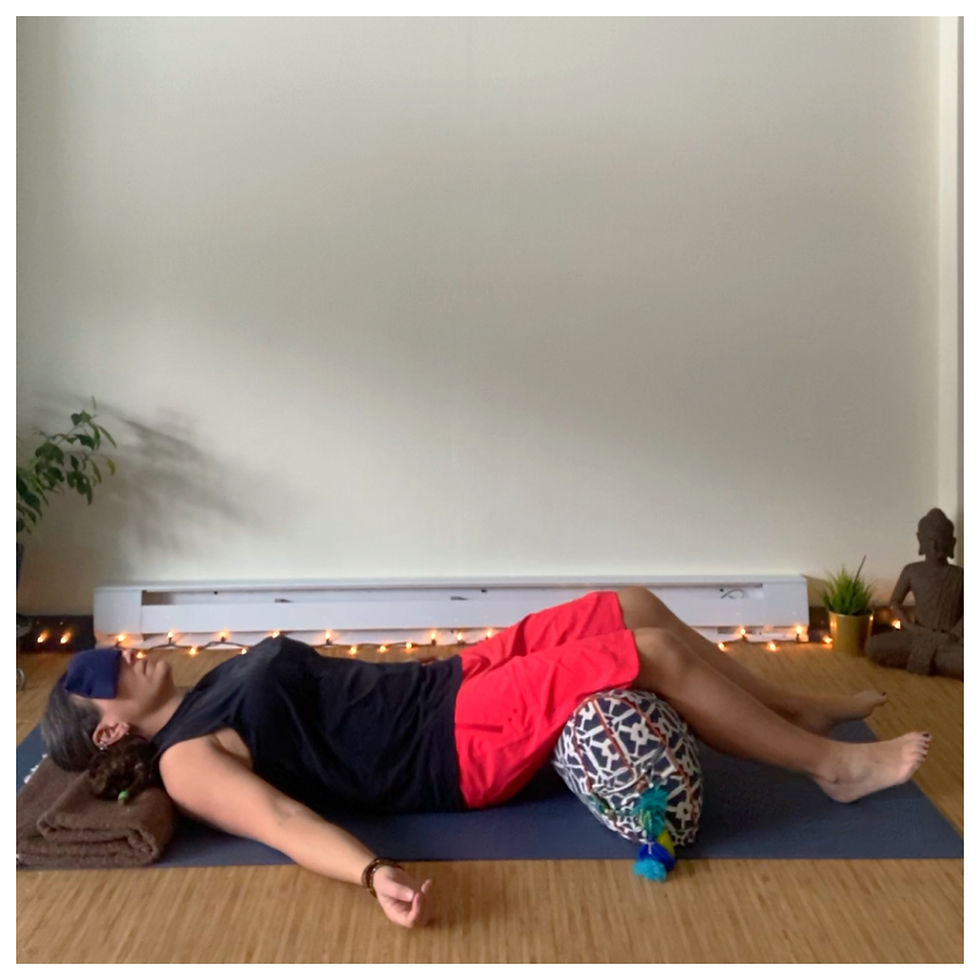Relief for Tight Hips
- Joy Zazzera

- Jun 17, 2020
- 3 min read
Sometimes the combination of imbalances in the body with movements you perform repeatedly create inflammation of the soft tissue localized to the joint involved. One common soft-tissue injury is Bursitis. If you’ve been spending extra time sitting down, cycling, paddling or even running on uneven roads and trails, and are currently experiencing tightness and tenderness around the outside of the hip, you could be dealing with Bursitis. Here’s what it is, how to get to the root cause of the imbalance and find some relief.

Bursitis is a soft tissue injury where the bursa become irritated and inflamed. Bursa are fluid-filled sac cavities that facilitate movement and prevent friction where muscles and tendons move over boney joint structures.
When your discomfort is localized to the outer hip as is most common, it is likely specific to an irritation of the Iliotibial Band - a fibrous band of connective tissue that lays over the bursa cavity at the Greater Trochanter - or top of the thigh bone. An irritated IT Band can lead to an irritation of the tissues around at the Greater Trochanter causing the bursa to become irritated as well - which you feel as tightness, tenderness, inflammation and restricted mobility around the hip below the belt line.
Here are a few self-care steps you can take to begin to get to the root of the imbalance.
🌀Monitor you movement patterns and how you hold load in your body during a day of regular demand. Does your posture feel evenly aligned? Are you extra tense somewhere causing you to guard? How much time do you spend stair climbing and what’s your posture and patterns like during those movements?
🌀Perform less of the movements you suspect to be the culprit. Less sitting and stair climbing for sure.
🌀Ice intermittently through the day when possible. Try filling bathroom sized paper Dixie cups with water, freeze, then peel back the edges as you need. Roll the ice around the tender or inflamed area for at least 10 minutes. Have a towel to help with drips. An ice pack will also work just fine.
🌀Sleep on the non-tender side. Pack a few pillows behind you to give you a stopping point from rolling to the side causing you discomfort.
🌀If available use a cane in the opposite hand as you walk around your home or office to help offset the load or stress on the area of discomfort. Just for a couple of days - they make some pretty sweet canes these days! Mine’s teal!
In addition to the above steps, incorporate these common exercises shown in the video 2-3 times throughout your day to help lengthen the tissues and strengthen the muscles the that support hip mobility. Remember to perform on both sides with some extra attention to the side of discomfort 😉
Strengthening Glutei + Hip Rotators
✨SIDE-LYING CLAMSHELLS - 1 breath to lift open, 1 breath to close; 8 reps, 3 times each side
✨4-POINT HIP ABDUCTION BENT LEG - 1 breath to lift and press through sole of foot, 1 breath to lower knee to mat; Press hands down keeps your spine long and chest lifted; Abdominal engagement keeps the pelvis stable; 8 reps, 3 times each side
Lengthening Outer Hip Tissues + IT Band
🔆 RECLINED FIGURE 4 - 10 breath cycles to start with arms relaxed out long, then 20 breath cycles holding legs over hips as shown keeping shoulders and chest open and relaxed. Breath cycle is an unrushed inhale and an exhale.
🔆 DYNAMIC ROLLING BRIDGES - 1 breath to lift, 1 breath to lower, 8 reps
🔆 HIP STRETCH WITH GENTLE LUMBAR ROTATION - 1 breath to lower, 1 breath to switch sides, 8 reps staying on one side longer if it feels necessary.
If you are experiencing Bursitis you may also notice a secondary area of discomfort around the knee. The most common Bursitis (localized to the front and outer hip) - Greater Trochanteric Bursitis - will naturally impact alignment and may casue tissue changes around the knee, as a result.
In regular instances with self-treatment and simple strengthening and stretching exercises the Bursitis may resolve over 2 weeks but sometimes not. It’s always best to listen to your body and follow up with your Sports Medicine or general healthcare provider.







Comments